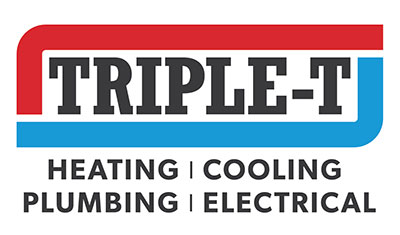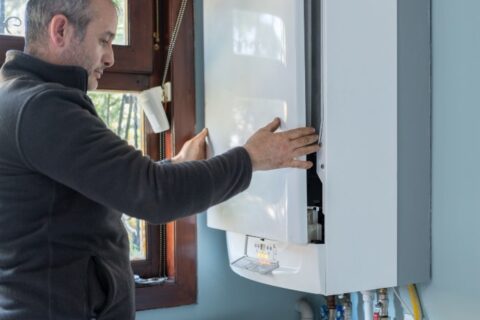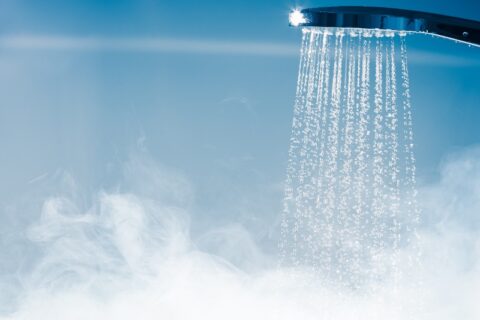Is Water Heater Maintenance Necessary?
Perhaps you recognize the importance of furnace maintenance, but do you give your water heater the same yearly attention? Your water heater may operate quietly behind the scenes, but it’s one of the hardest-working appliances in your home. Without it, you would be stuck with only ice-cold for bathing, showering, cooking, and cleaning. Learn more about the importance of water heater maintenance and tips for maintaining your water heater.
Benefits of Water Heater Maintenance
It’s easy to neglect your water heater, but making routine maintenance a priority provides many benefits:
- Lower water heating bills: Sediment buildup is a frequent issue for storage tank water heaters, especially in Utah, where the tap water is quite hard. Flushing your water heater is a surefire way to improve efficiency and lower your water heating bills.
- Longer lifespan: If you ignore your water heater, it may fail in as little as eight years or less. With proper maintenance, you can prolong its lifespan to 10 years or longer.
- Less chance of inconvenient breakdowns: Getting blasted with cold water is not how anyone wants to start their day. Since maintenance catches small problems and prevents many others from forming, inconvenient breakdowns become less likely.
- Peace of mind: Regular maintenance ensures your water heater operates correctly and safely. The resulting peace of mind is a priceless benefit of maintaining your water heater.
Signs You Need Water Heater Repair
Make a habit of maintaining your water heater once a year, even if it seems to be operating normally. Otherwise, you may start noticing performance problems that warrant a repair, such as:
- No or not enough hot water: It’s hard to miss a sudden and complete lack of hot water, but that’s not the only sign you need water heater repair. You’ll also want to watch for less hot water production or your water taking longer than normal to heat up at the tap.
- Odd noises: Some water heater sounds are totally harmless, while others are cause for concern. If you notice noises that differ from what you usually hear, don’t risk it—call a technician to diagnose and repair the problem.
- Colored or funny-smelling hot water: Your tap water should always be clear, and you should never detect any odors coming from it. Rust-colored water or a metallic smell could mean your water heater needs some attention, especially if only the hot water seems to be affected.
- Leaking tank: If your water heater springs a leak, this is an obvious call for help. Don’t ignore any leaks you see, no matter how small. A slow drip can turn into a much bigger problem if you don’t address it promptly.
Tips for Maintaining Your Water Heater
Since winter is when your water heater works the hardest, this is a great time of year to perform water heater maintenance. Here are the steps you should take, either by yourself or with help from a licensed technician:
- Prepare the tank for water heater maintenance: Turn off the gas or electricity, depending on the water heater’s power source. Close off the water inlet and allow the water to cool down. Turn on one hot water faucet in your home to a slow drizzle to release pressure inside the tank.
- Test the temperature-pressure relief (TPR) valve: The TPR valve is located on the side or top of the water heater tank. It’s designed to open automatically if the pressure inside the tank rises to an unsafe level. To test the TPR valve, lift the tab to allow some water to dribble out. If no water flows from the valve or it fails to snap back into place, install a new one as soon as possible.
- Examine the anode rod: The sacrificial anode rod attracts corrosive elements in your hot water to help preserve the tank’s lining. To check the condition of the anode rod, first loosen the hex head screw from the top of the tank. Then, lift the rod out. If it’s less than one-half inch thick or coated in calcium, replace the rod sooner rather than later.
- Perform a mini-flush: Sediment buildup inside your water heater decreases efficiency, shortens the appliance’s lifespan, and can cause corrosion. Draining a few gallons from the bottom of the tank flushes out sediment to help you avoid these problems. First, attach a hose to the tank’s drain valve and fill a nearby bucket. Then, open the cold-water supply valve to stir up sediment in the tank. Drain and repeat until the water comes out clear.
- Restart the water heater: Close the drain valve and open the water inlet to refill the tank. Restore power by turning on the gas or electricity and relighting the pilot, if needed.
- Adjust the temperature: Set the thermostat to 120 degrees instead of the default 140 degrees to help your water heater run more efficiently. This simple step saves you up to 10 percent in energy costs and prevents scalding at the tap. However, don’t lower the temperature any more than this, or you risk microbial growth in the tank.
- Install insulation: To help the water heat up faster at the tap, apply self-sticking foam pipe insulation to the pipes entering and exiting your water heater. You can also insulate the appliance itself with a special water heater jacket to reduce standby heat loss.
Schedule Water Heater Repair or Maintenance
Whether your water heater is on the fritz, or you want to avoid problems before they start, reach out to Triple T Heating, Cooling & Plumbing. We service water heaters of all kinds, including gas-fired, electric-powered, storage tanks, and tankless models. We’re careful to leave your home clean and undamaged when performing water heater maintenance or repairs. We also provide a 100% satisfaction guarantee and a 12-month parts and labor warranty.
For more information or to schedule water heater services in Utah County, please call Triple T at 801-798-7711 or contact us online.


